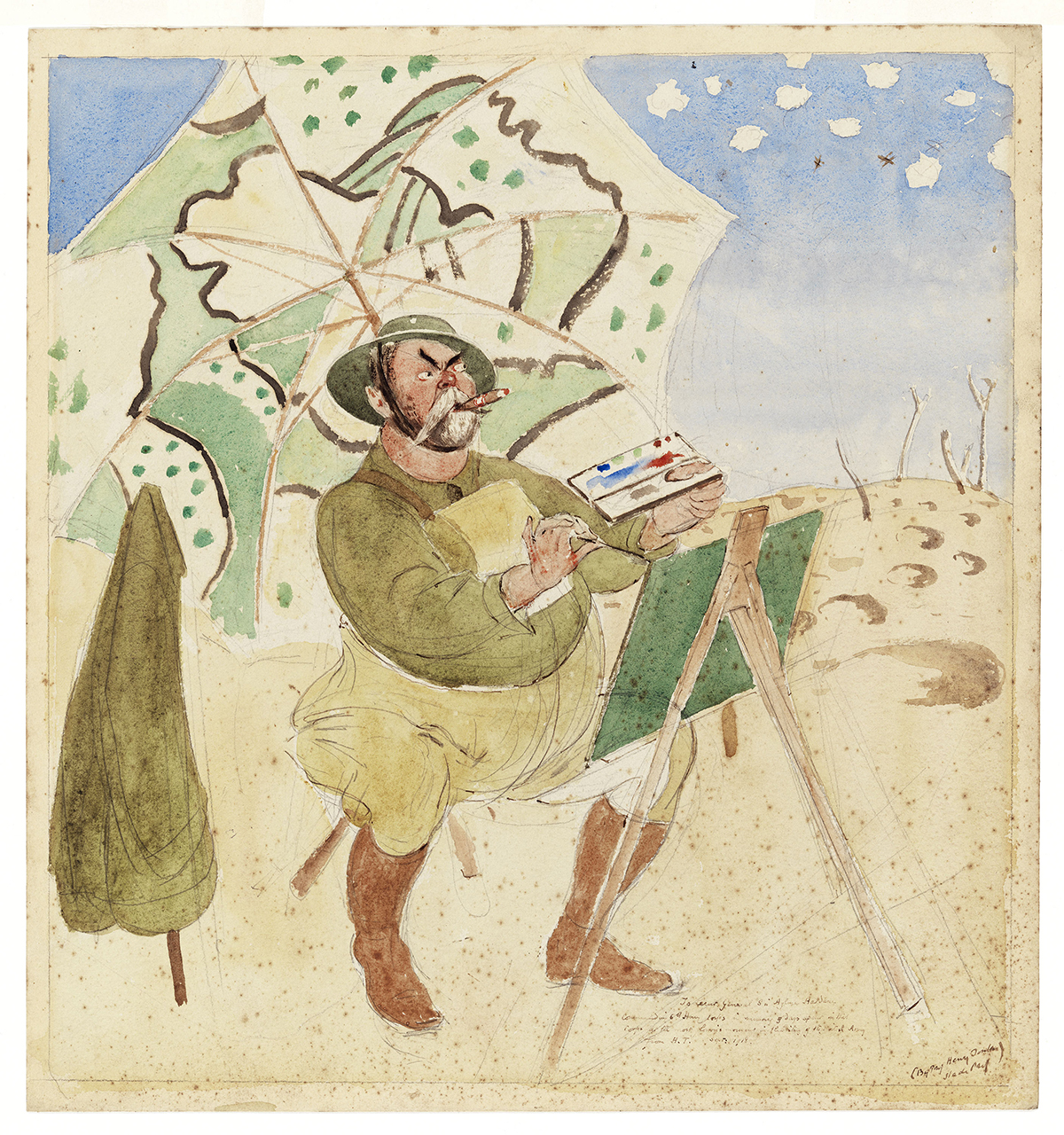MFA’s New John Singer Sargent Exhibit Shows the Artist’s Personality

John Singer Sargent Painting by Henry Tonks, 1918 / Provided by the Museum of Fine Arts, Boston
John Singer Sargent is widely renowned as one of the leading portrait artists of his generation, praised for skillfully capturing the personalities of his various sitters—society’s elites, U.S. presidents, fellow artists, and other prominent contemporaries of the late 19th and early 20th centuries.
But a new exhibit at the Museum of Fine Arts, titled “Yours Sincerely, John S. Sargent,” offers a glimpse into the personality of the master painter himself.
“This show is a lot of fun, and I think people will enjoy getting behind the scenes a little bit with Sargent,” says Erica Hirshler, senior curator of American paintings at the museum. “The portraits can be very formal and to get to see him as a human being and a painter who’s nervous sometimes and proud sometimes and particular sometimes—I think it just tells a wonderful story.”
The story is told through Sargent’s sketches, photographs of his studio, props, and sketches. The exhibit is organized into six themes, each depicting a different aspect of Sargent’s life—his time in London, his time in Paris, his friendship with Claude Monet, caricatures of the artist by friends and fellow artists Henry Tonks and Max Beerbohm, his appointment as an official war artist during World War I, and his relationship with the MFA.
Sargent’s correspondence with his lifelong friend Monet is particularly amusing, revealing Sargent’s enthusiasm, sense of humor, and a deep admiration for the leading French Impressionist. In the summer of 1889, he wrote:
I am still haunted by the memory of your most recent paintings, full of unfathomable things. Do not hold it against me if I exclaim loudly at the merest trifle when I return to your studio. I am fully aware that your work at the moment is surpassing that of all others and nearing perfection.
In December 1894, Sargent wrote to Monet from London, imploring him to send updates and pay a visit:
Every day in London there is beautiful, absinthe-coloured weather. Is that not enough to lure you here? If you wanted to work in London you could stay at my studio, unless you come and pay me a little visit in the country. If you feel so inclined, be assured that I would be thrilled.
“Monet is 20 years older than Sargent, but he’s a much more avant garde painter, and Sargent—who really did depend on portrait commission and official exhibitions—you’d think would be more conservative in his taste, but he really wasn’t,” says Hirshler. “He absolutely admired Monet, and even though he didn’t paint like him, he very much admired him as an artist and valued him as a friend.”
In an undated letter, Sargent apologizes to Monet for a long lack of correspondence:
I have just arrived and the pleasure of finding a letter from you was quickly mixed with gloomy speculation because to me it seems written to make me understand that you are offended.
If it is because I have not written to you for a long time I beg you to pardon this oversight and to be indulgent. If this silence implied anything at all, it was that I felt secure in the knowledge that we had a sound understanding between us, which for my part remains unwavering.
It’s unclear what transpired to make Sargent send this particular letter—most of the correspondence to the artist from others has either been thrown out by the Sargent himself or destroyed when his sisters cleaned out his studio after his death.
“That’s a great missing length in Sargent scholarship,” says Hirshler. “He does respond to what other people are telling him, so it’s not totally one-sided, but we don’t have the other side of the correspondence.”
One of few surviving letters addressed to Sargent comes from Madame Gautreau, a young socialite painted by the artist in “Portrait of Madame X,” which now proudly hangs inside the Metropolitan Museum of Art in New York, but was initially criticized for depicting the subject in a provocative dress with a plunging neckline.
“She writes that Sargent has made a masterpiece of her portrait, so we know that she liked it before it got shown in public and criticized,” says Hirshler. “It makes you wonder whether the criticism was about the painting, or whether it was about her.”
Sargent’s correspondences with Monet and Madame Gautreau are some of the never-before-displayed materials that were recently gifted to the museum by the artist’s grand-nephew Richard Ormond and his wife Leonée, as well as art dealer and scholar Warren Adelson and his wife and MFA overseer Jan Adelson. With the new gifts, the MFA has established the John Singer Sargent Archive, which now marks the museum as the global center for Sargent scholarship.
“To have this material really makes Boston the Sargent capital,” says Hirshler. “I think it’s a great triumph for the MFA.”
“Yours Sincerely, John S. Sargent” will be on view at the Museum of Fine Arts through November 15. To explore more letters from the John Singer Sargent Archive, visit mfa.org.


